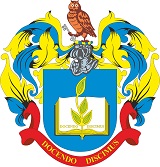Будь ласка, використовуйте цей ідентифікатор, щоб цитувати або посилатися на цей матеріал:
http://46.63.9.20:88/jspui/handle/123456789/537Повний запис метаданих
| Поле DC | Значення | Мова |
|---|---|---|
| dc.contributor.author | Bazyma, N. | - |
| dc.contributor.author | Zdanevych, L. | - |
| dc.contributor.author | Kruty, K. | - |
| dc.contributor.author | Tsehelnyk, T. | - |
| dc.contributor.author | Popovych, O. | - |
| dc.contributor.author | Ivanova, V. | - |
| dc.contributor.author | Cherepania, N. | - |
| dc.date.accessioned | 2021-09-29T09:34:42Z | - |
| dc.date.available | 2021-09-29T09:34:42Z | - |
| dc.date.issued | 2020 | - |
| dc.identifier.citation | Bazyma, N., Zdanevych, L., Kruty, K., Tsehelnyk, T., Popovych, O., Ivanova, V., & Cherepania, N. (2020). Formation of Speech Activity in Older Preschool Children with Autistic Disorders Formation of Speech Activity in Older Preschool Children with Autistic Disorders. BRAIN. Broad Research in Artificial Intelligence and Neuroscience, 11(3), 107-121. https://doi.org/10.18662/brain/11.3/112 Web of Science https://lumenpublishing.com/journals/index.php/brain/article/view/3228 | uk_UA |
| dc.identifier.other | https://doi.org/10.18662/brain/11.3/112 | - |
| dc.identifier.other | https://lumenpublishing.com/journals/index.php/brain/article/view/3228 | - |
| dc.identifier.uri | http://46.63.9.20:88/jspui/handle/123456789/537 | - |
| dc.description.abstract | The main condition for personal and mental development of a child is preservation of speech function or, in case of speech pathology, correction and development of all its structural components as a full-fledged means of communication. The purpose of the study is to scientifically substantiate, develop and experimentally test psychological and pedagogical conditions and methods of formation of speech activity in children with autistic disorders of older preschool age. There were highlighted effective methods for speech activity formation: creation and maintenance of a speech environment; constant speech support of a child; teaching a child to express thoughts in any way possible; use of stimulants and incentives in order to increase motivation for speech activity; use of available child’s vocalizations; use of echolalia and a tendency to stereotypical repetition of actions; stimulation of speech activity against the background of emotional recovery; development of speech activity by imitation; activation of passive vocabulary and its gradual translation into active; fostering initiative and desire for self-realization. The indicators of the formation level of speech activity components in EG compared with CG, respectively, are: motivation: high not found, sufficient: + 8.6%, average: + 19%, low: + 14.3%, zero - 41.9%; initiative: high not found, sufficient: + 10.7%, medium: + 13.8%, low: + 9.5%, zero - 34%; content: high: + 4.3%, sufficient: + 17.6%, medium: + 12.9%, low: - 27.3%, zero - 7.5%. The best indicators were achieved by children of the experimental group, which gives reason to assert the effectiveness and feasibility of using the proposed methodology for formation of speech activity in the process of correctional developmental education of children with autistic disorders. | uk_UA |
| dc.language.iso | en | uk_UA |
| dc.publisher | BRAIN. Broad Research in Artificial Intelligence and Neuroscience. Web of Science | uk_UA |
| dc.subject | speech environment | uk_UA |
| dc.subject | accompaniment of a child’s activities | uk_UA |
| dc.subject | increasing motivation | uk_UA |
| dc.subject | child’s vocalization | uk_UA |
| dc.subject | stereotypical repetition | uk_UA |
| dc.subject | nurturing initiative | uk_UA |
| dc.title | Formation of Speech Activity in Older Preschool Children with Autistic Disorders Formation of Speech Activity in Older Preschool Children with Autistic Disorders. | uk_UA |
| dc.type | Стаття | uk_UA |
| Розташовується у зібраннях: | Кафедра дошкільної педагогики, психології та фахових методик | |
Файли цього матеріалу:
| Файл | Опис | Розмір | Формат | |
|---|---|---|---|---|
| 3228-Article Text-10204-1-10-20201007.pdf | стаття | 291,73 kB | Adobe PDF |  Переглянути/Відкрити |
Усі матеріали в архіві електронних ресурсів захищені авторським правом, всі права збережені.
